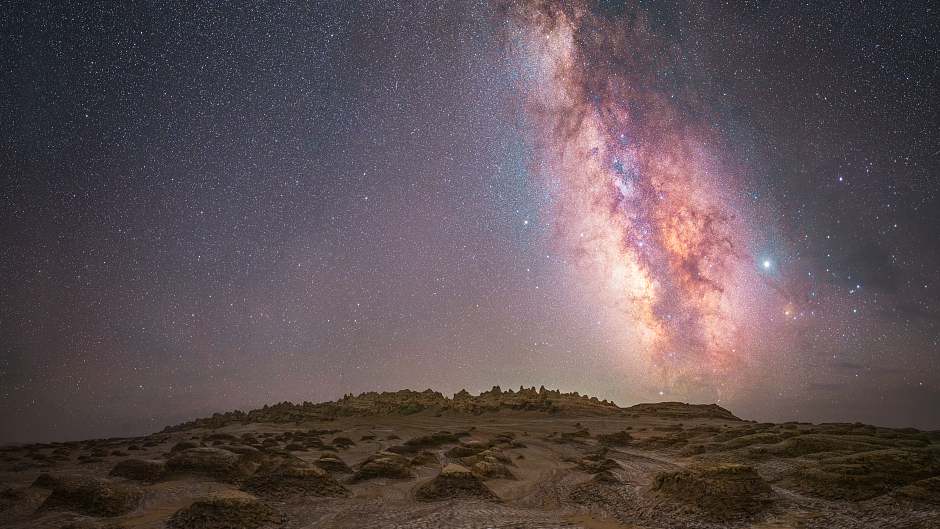
The town of Lenghu in northwest China's Qinghai Province has clear night sky that meets the requirements for a world-class observatory site. /CFP
The town of Lenghu in northwest China's Qinghai Province has clear night sky that meets the requirements for a world-class observatory site. /CFP
China has started to build a new survey telescope array that will mainly be used to detect space debris in medium and high orbits, the first of its kind in the country.
The multi-application survey telescope array (MASTA), developed by the Purple Mountain Observatory of the Chinese Academy of Sciences, is expected to be completed by 2023.
It's under construction in the town of Lenghu, northwest China's Qinghai Province, with an average elevation of 3,800 meters above sea level. The site is chosen for the plateau region's clear night sky.
"The survey telescope array can detect small space debris and determine its orbit and operation law, thus providing early warnings and making it possible to avoid debris collisions threatening the safety of spacecraft," said Lei Chengming, a researcher at the Purple Mountain Observatory.
Tian Cairang, executive deputy director of the Lenghu Industrial Park Management Committee, said that Lenghu has become an astronomical observation base that now hosts six scientific research units and eight telescope projects. In the future, Lenghu is expected to become the largest astronomical observation base in China and a world-class astronomical research center.
The town, with a total area of 17,800 square kilometers, is located 944 kilometers away from Qinghai's provincial capital of Xining. Its clear nights meet the requirements for a world-class observatory site.
(With input from Xinhua)

